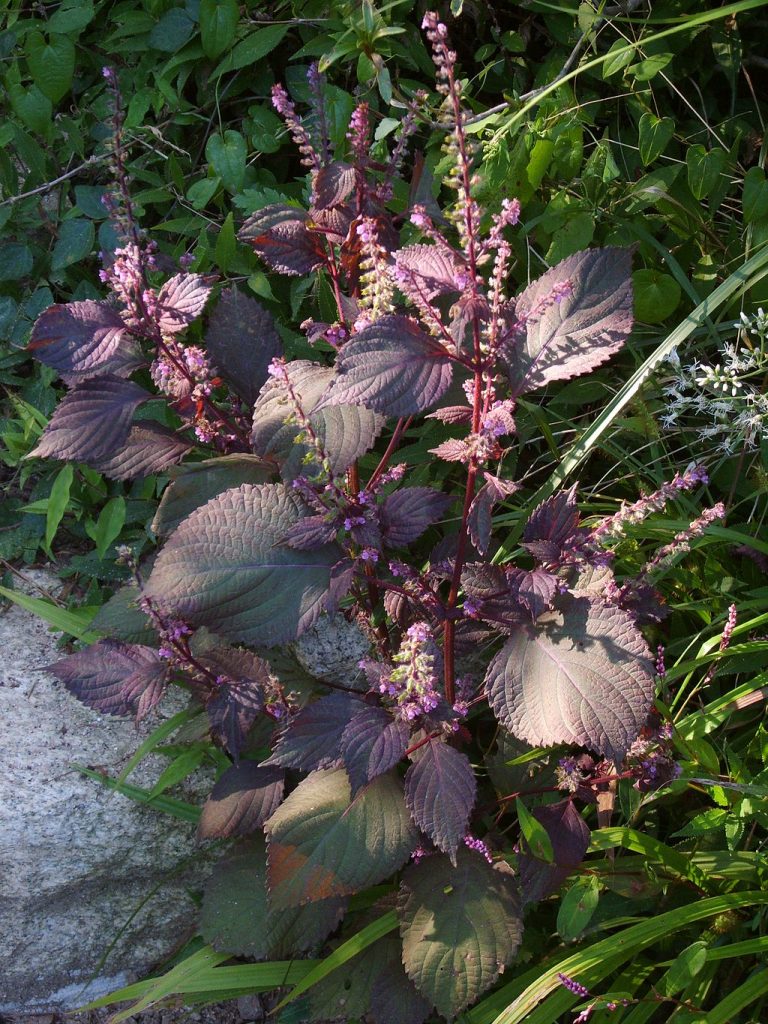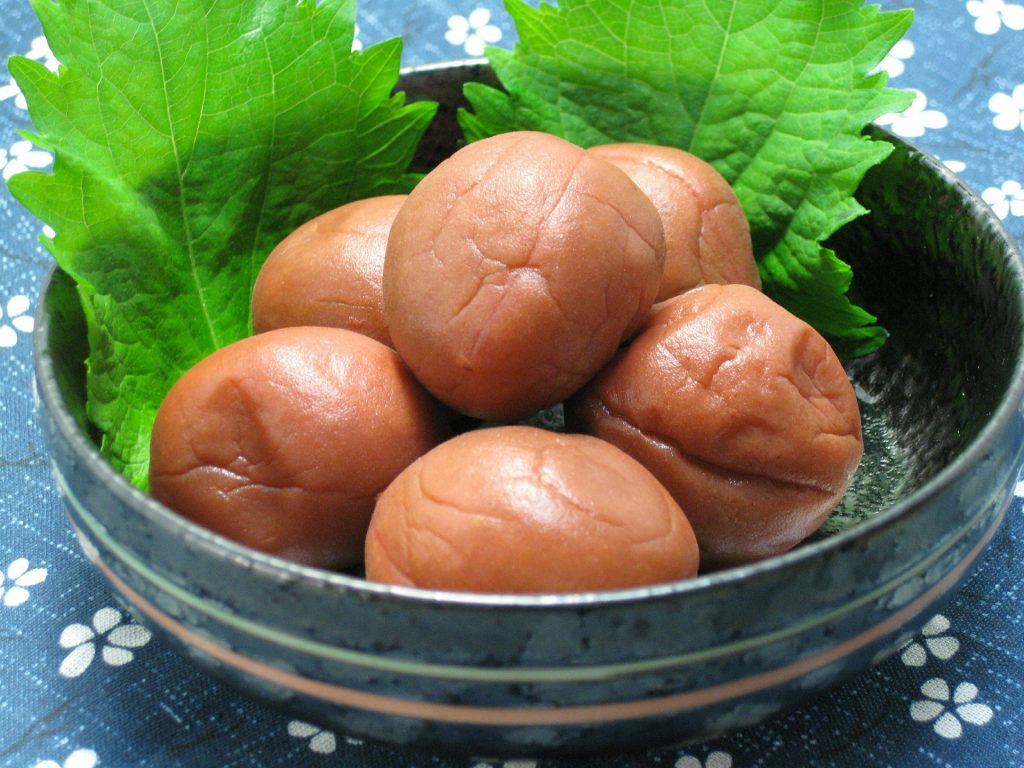 Perilla (Perilla frutescens) is an annual plant that belongs to the Lamiaceae or mint family of plants. Common names for Perilla frutescens include perilla or Korean perilla. Perilla is found growing in parts of Asia including Korea, China and India where it is often cultivated and used for its medicinal properties. One traditional use for perilla is in the treatment of mood disorders such as anxiety and depression. A number of studies have investigated the mood elevating effects of the herb. For example, in one study, the essential oil of perilla was shown to possess a significant antidepressant effect against chronic and unpredictable stress in mice. The stress was shown to reduce levels of serotonin in the brains of the animals and also increased pro-inflammatory markers. However, the essential oil of perilla administered orally, was able to reverse these changes. Perilla essential oils may therefore modulate inflammation and serotonin levels in the brain, and this may produce antidepressant effects.
Perilla (Perilla frutescens) is an annual plant that belongs to the Lamiaceae or mint family of plants. Common names for Perilla frutescens include perilla or Korean perilla. Perilla is found growing in parts of Asia including Korea, China and India where it is often cultivated and used for its medicinal properties. One traditional use for perilla is in the treatment of mood disorders such as anxiety and depression. A number of studies have investigated the mood elevating effects of the herb. For example, in one study, the essential oil of perilla was shown to possess a significant antidepressant effect against chronic and unpredictable stress in mice. The stress was shown to reduce levels of serotonin in the brains of the animals and also increased pro-inflammatory markers. However, the essential oil of perilla administered orally, was able to reverse these changes. Perilla essential oils may therefore modulate inflammation and serotonin levels in the brain, and this may produce antidepressant effects.

Perilla (Perilla frutescens) (pictured) confers anti-anxiety effects to mammals. A number of phenolic compounds have been isolated from the leaves of perilla. These include caffeic acid-3-O-glucoside, rosmarinic acid-3-O-glucoside, rosmarinic acid, luteolin, and apigenin. Any of these compounds may explain the mood elevating effects of perilla. In particular, apigenin, rosmarinic acid and caffeic acid have all been shown to possess anxiolytic effects in mammals. Image from: By Dalgial (Own work) [CC BY-SA 3.0 (https://creativecommons.org/ licenses/by-sa/3.0)], via Wikimedia Commons.
The leaves of perilla contain a number of flavonoids from the flavone subclass of compounds. Two of these flavones, apigenin and luteolin, may possess anxiolytic effects. For example, in one study apigenin from perilla leaves was administered to mice who were exposed to stress. The stress induced anxiety in the mice and changed their behaviour, but apigenin significantly reduced the anxious behaviors exhibited by the animals, suggesting a significant anti-anxiety effect for apigenin. In other experiments, luteolin has also been shown to possess mood elevating effects in experiments on animals. Perilla leaves have also been shown to possess a number of terpene compounds. Terpenes have been researched for their anti-anxiety, anti-stress and antidepressant effects. The presence of terpenes in the leaf extracts of perilla could therefore explain the mood elevating effects of the herb. One way that terpenes could exert anti-anxiety effects is through interaction with the cannabinoid receptors CB1 or CB2.

Brain derived neurotrophic factor (BDNF) is a neurotrophin found in the brain of mammals. Brain derived neurotrophic factor is thought to promote neuronal survival, function, repair and plasticity. Decreases in BDNF are thought to be involved in the development of depression, and evidence suggests that some drugs that are used to treat depression are able to normalise levels of BDNF. Studies that have exposed mice to stress have measured BDNF levels and shown it to decline as a result of the stress. However, the essential oil from perilla has been shown to normalise these BDNF levels, and therefore the antidepressant effects of the essential oils observed in the mice may be due to its ability to modulate BDNF. Perilla leaves are often used in cuisine. Here (pictured) is a perilla leaf with some skinned plums.
The anti-anxiety effects of perilla may be due to the presence of hydroxycinnamates such as caffeic acid and its derivatives. Leaves of perilla contain the caffeic acid metabolite rosmarinic acid which has been shown to have anti-anxiety effects. Some studies have shown that only extracts of perilla containing rosmarinic acid are able to exert anti-anxiety effects. The parent compound of rosmarinic acid, caffeic acid, has also been shown to possess anti-anxiety effect, which may contribute to the mood elevating effects of perilla. Neither rosmarinic acid nor caffeic acid appear to cause changes to the monoamine neurotransmitter system, and so they may exert their effects through mechanisms not used by classic antidepressant drugs. Caffeic acid for example may exert its antidepressant effects through normalisation of brain derived neurotrophic factor (BDNF). In another study, the hydroxycinnamate 2,4,5-trimethoxycinnamic acid was shown to significantly reduce anxiety in mice exposed to stress.
Eat Well, Stay Healthy, Protect Yourself
RdB
